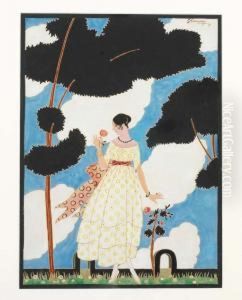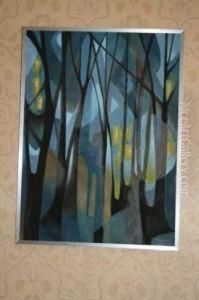Ranson Paintings
Paul Ranson was a French painter and writer, born in Limoges on March 29, 1861. He was associated with the Nabi movement, a group of Post-Impressionist avant-garde artists who set the pace for fine arts and graphic arts in France in the 1890s. Initially, Ranson studied at the École des Arts Décoratifs there before moving to Paris to study at the Académie Julian.
The Nabis were influenced by Paul Gauguin's synthetist style, which was characterized by the use of large flat areas of color and bold outlines, which in turn drew from cloisonnism and Japanese woodblock prints. Ranson, in particular, was fascinated with mysticism and symbolism, and his work often reflected a blend of spiritual and esoteric themes.
In Paris, Ranson became a pivotal member of the Nabis, and he was given the moniker 'Nabi plus japonard' (most Japanese of the Nabis) for his frequent use of motifs and stylistic elements derived from Japanese art. He was closely associated with other members of the group, including Pierre Bonnard, Édouard Vuillard, and Maurice Denis, and he had a significant influence on the development of the decorative style that many of the Nabis adopted.
Ranson was also an educator, founding the Académie Ranson in 1908 with his wife France, which became a hub for the Nabis and other artists. This academy provided an alternative to the more conservative official art schools and attracted many young artists who would become prominent in their own right.
Sadly, his career was cut short by his untimely death on February 20, 1909, in Paris. Despite his early death, Ranson's impact on the art world was significant, especially in the context of the Nabi movement and the development of early modernist painting in France. His work is characterized by an ethereal quality, often exploring themes of nature, myth, and the metaphysical. Today, Paul Ranson's paintings can be found in museums around the world, and he is celebrated for his contributions to the Symbolist and Post-Impressionist movements.

